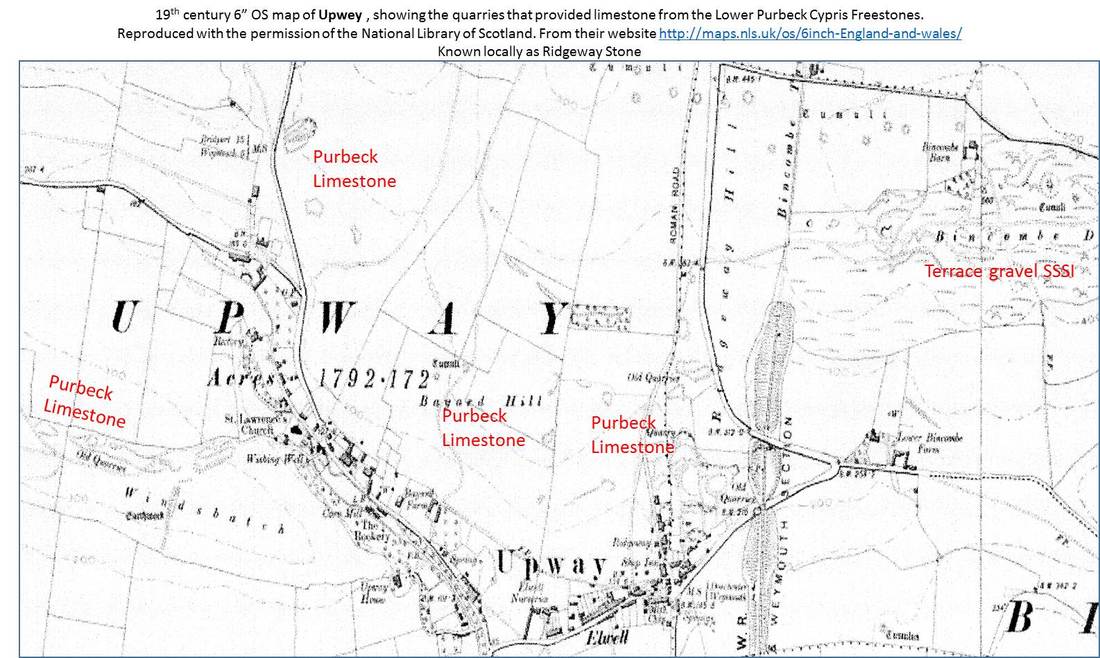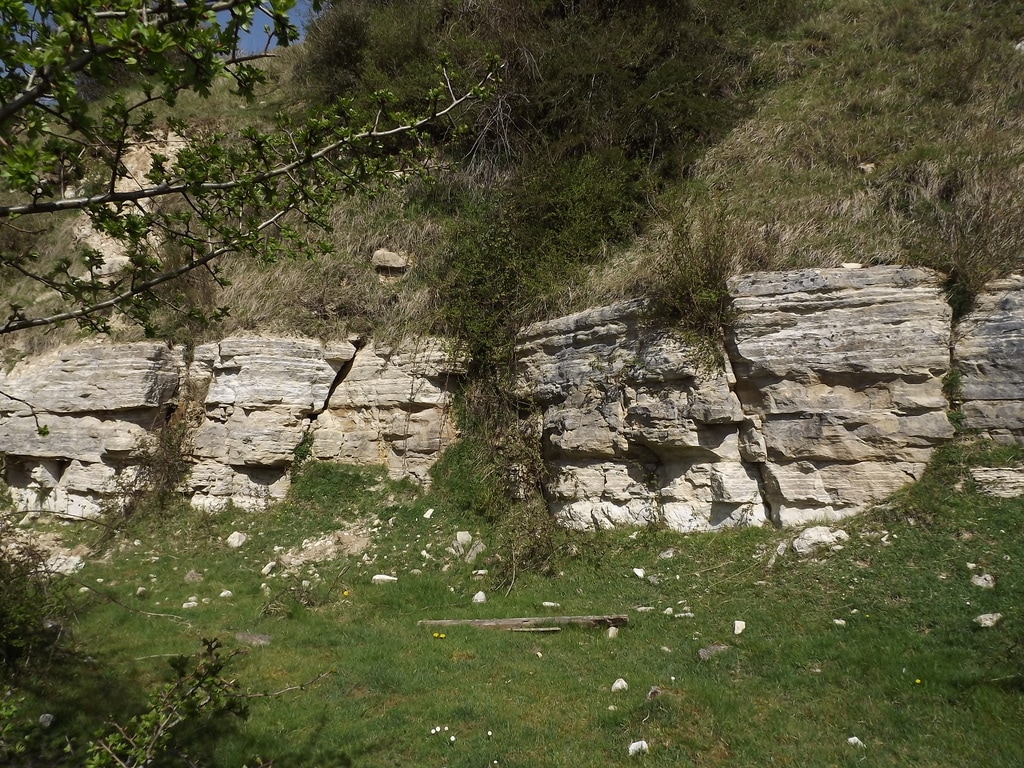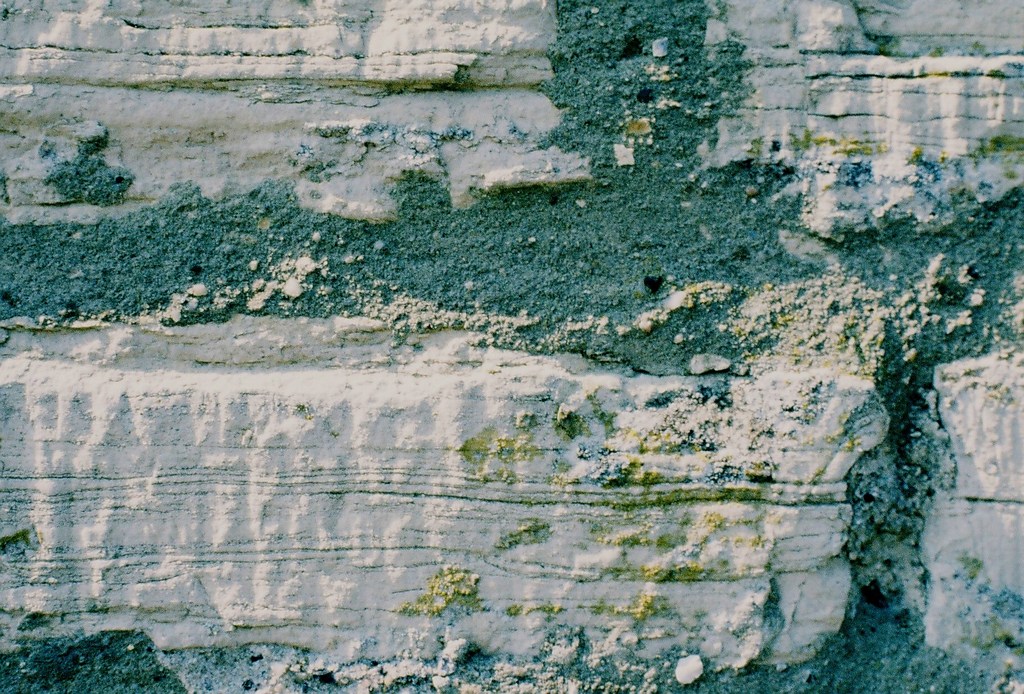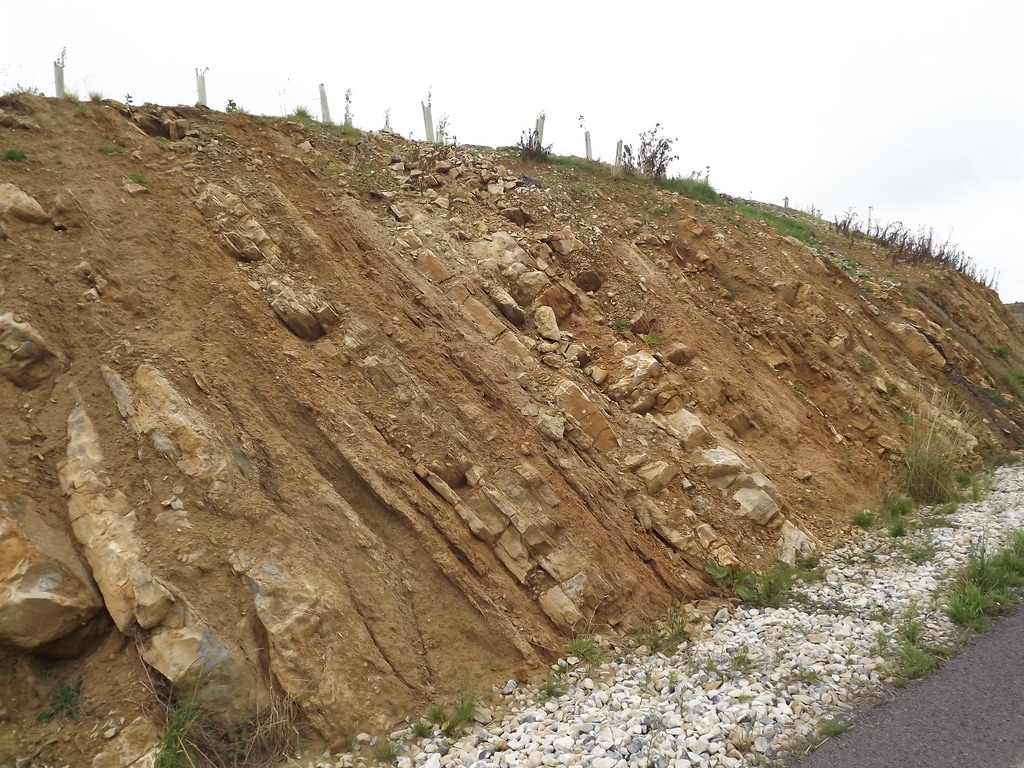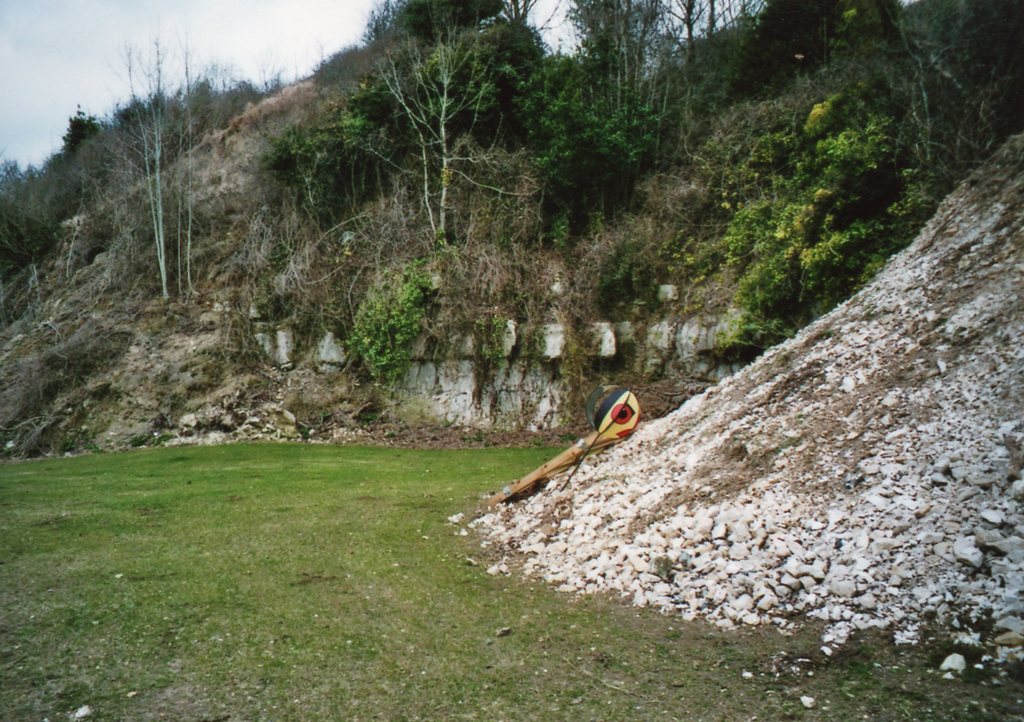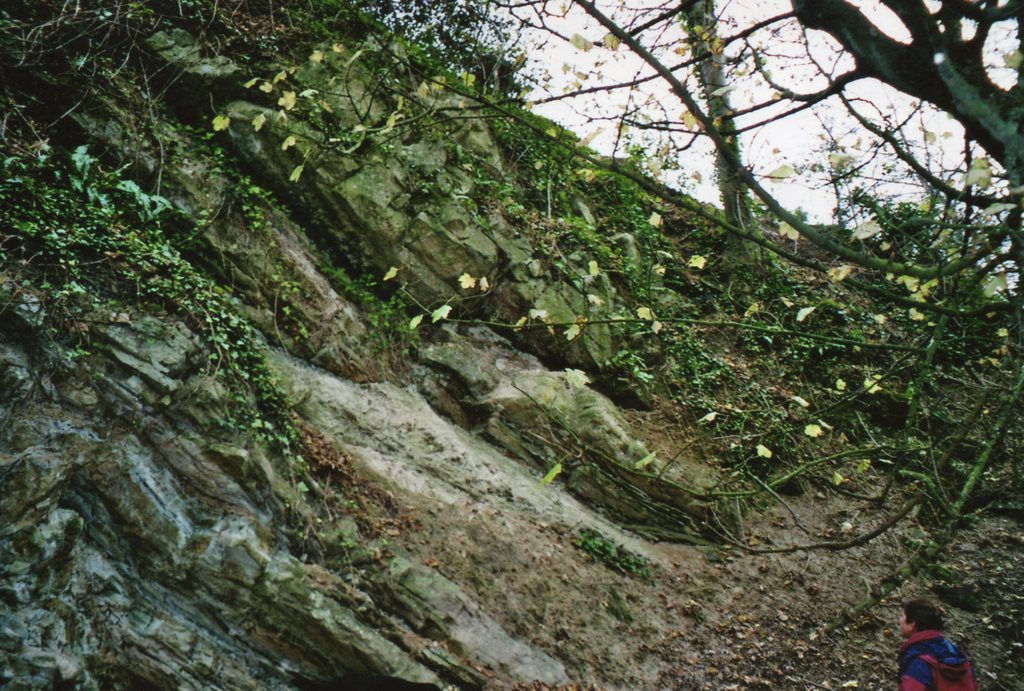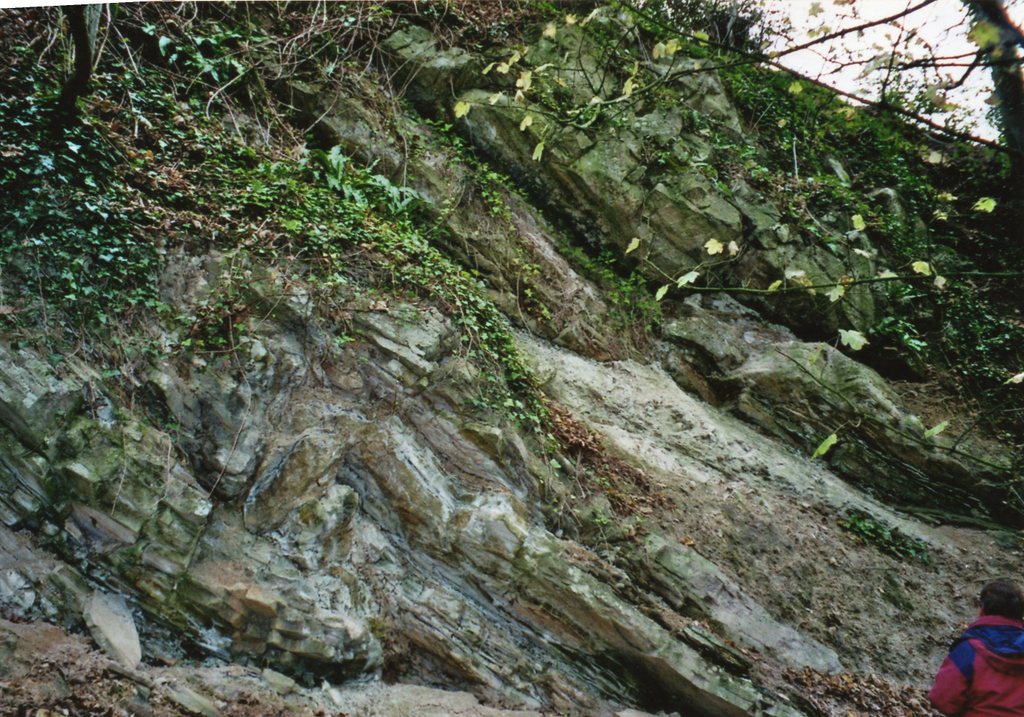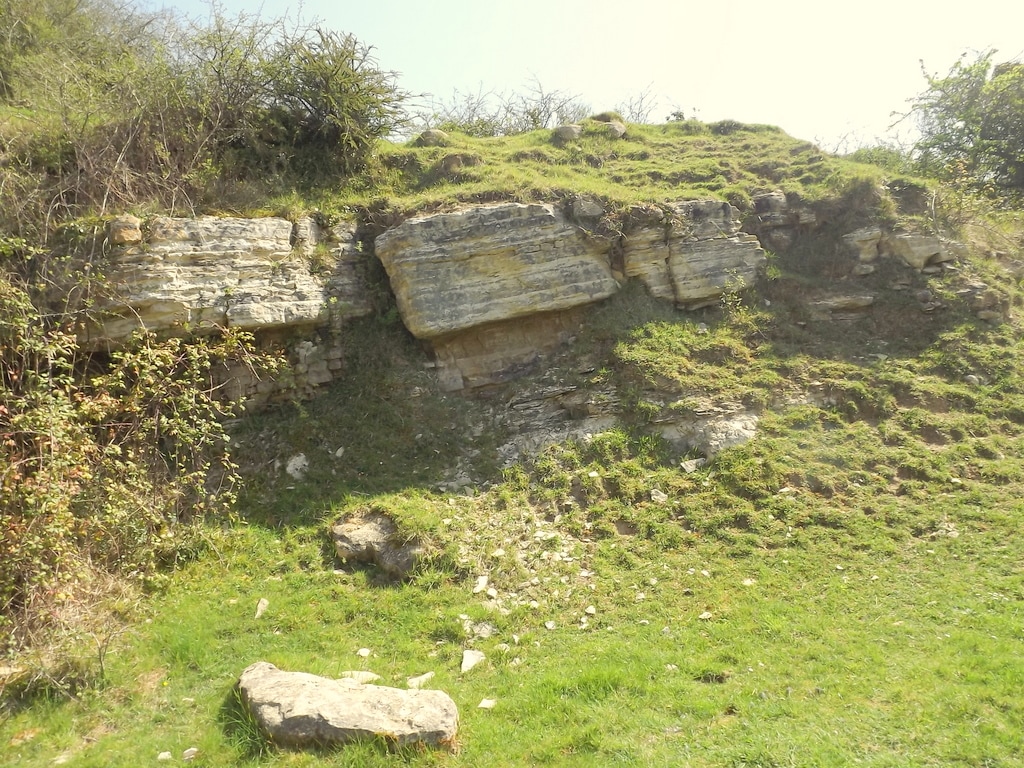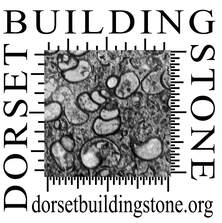Quarries in the Upwey area.
|
Stone from Upwey has been used for more than 2000 years, as a pre-Roman monument has been found on Maiden Castle. The Romans themselves took the Cypris Freestones of the Lower Purbeck to build the quoins of the Roman villas in Dorchester and Druce Farm in Puddletown. The Roman road from Weymouth to Dorchester goes past the west side of the Ridgeway quarries, all of which are very deep. The new cutting at the entrance to Bayard Farm (GR SY673852) has uncovered the top of the Portland Freestone and the whole of the Purbeck Limestone sequence. The cottages in Upwey have utilised several different beds within the Purbeck limestone sequence, but St. Lawrence church is mostly Cypris Freestone, though the Portland Stone is used for dressings and Ham Hill Stone and Bath Stone, probably used in the 19th century rebuilding, can be found inside. A curiosity is that the eastern wall of the chancel has ashlar of Cypris Freestone, used ‘face-bedded’, which is not weathering well. One of the northern quarries on the map was used as a waste tip, and has been completely infilled.
|
The beds of limestone and shale are dipping to the north at around 40º and broken near the top of the hill by several faults. The sequence of beds is similar to the sequence in the Isle of Purbeck, but those that could be given the same names as in Purbeck are noticeably thinner.Windsbatch quarry, west of Upwey Wishing Well (GR SY 659852), is recorded in the Victoria County History of Dorset, (volI. p344) as having provided stone for Westminster and the Tower of London in the middle of the reign of Edward III.
|

